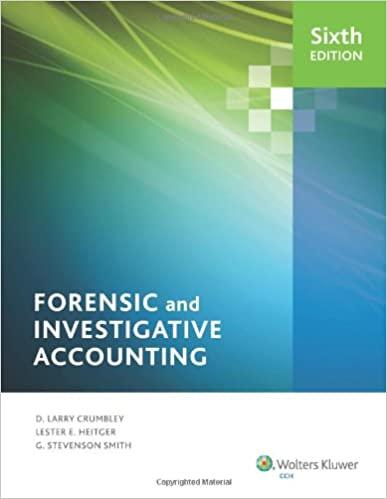Case 2 Spatial Techrology, Inc F. Describe the four succcssful rounds of venture financing. (A through D) achieved by Spatial Technology in terms of sources and amuunts. What additional financing sources have been uscd? G. Conduct a ratio analysis of Spatial Technology's past income statements and balance sheets. Note any performance strengths and seaknesses and discuss any ratio trends. H. Use the cash flow statements for Spatial Technology, Inc., to determine whether the venture has been building or burning cash, as well as possible trends in building or burning cash. 1. Discuss possible reasons why Spatial Technology's plan for an IPO of common stock at the end of 1992 was withdrawn. 1. Describe the IPO market conditions in 1996 and discuss possible rearons why the proposed 1PO at a price of about $10 per share planncel for Octoher 1996 and involving Dain Bosworth as lead underwriter failed. K. Evaluate the compound return on investments made at startup, Round A, Round B, Round Csand Round D if the acquired shares eventually sell at $10 and $5. Fvaluate the compound return on all investments of each existing investor. Analyze the incentives of each investor and founder for taking the Cruttenden Roth offer to execure a 55 IPO. L. Using the provided financial statements as a starting point: 1. Prepare and present a discounted cash flow viluation and pro forma financials with five years of explicit forceasts using license fecs and royaltics growth rates consistent with recent hiswary (e.g-, two to three years) at Spatial. 2 Modify your unalysi' en consider a mare successful secnario where Spatials main revenue source. (cambincad krow at 50 percent for five years and then flutten to a more sustainable gromth rate. 3. Prepare and present cliscounted cash flow vatuations and pro forma financial statements (five-year explicit period) that justify a $10 share price and a $5 share price at the IPO. Make sure the ratios embedded in your projections conform to reasonable operating ratio assumptions. 4. In all cases, be sure to explain your modeling assumptions on revenue and costs and provide a summary couparison of the four scenariose M. Discuss the 85 and 310 IPQ prices for Hipatial within the context of ccmparalve firmis and their multiples. (There are scme ghimpses of mattiples in the ease materials. bus you may wislo to use some outside hiverieal reference material. Please saate: your sourcus.) A. Prepare an executive summary discusking thi events and decisitns (technological and financial) leading to its vituation, the options it had, and your reccummentiations for Spatial's fufure. Uould (could) you hase done any thing differently? O. Take a position on whether you woutd recommend the $5.2. Tahe a position on whether, as an investor, you would have purchased shares in the 55.1180. R. Discuss what you belicse would have been the strategic outiook for Spatial (product lines, licensing, compeditors, efe.) at the time and witat you belicte would fave foen the fituncial market o view of a fouldicly traded spatial Texhnulogey Case 2 Spatial Techrology, Inc F. Describe the four succcssful rounds of venture financing. (A through D) achieved by Spatial Technology in terms of sources and amuunts. What additional financing sources have been uscd? G. Conduct a ratio analysis of Spatial Technology's past income statements and balance sheets. Note any performance strengths and seaknesses and discuss any ratio trends. H. Use the cash flow statements for Spatial Technology, Inc., to determine whether the venture has been building or burning cash, as well as possible trends in building or burning cash. 1. Discuss possible reasons why Spatial Technology's plan for an IPO of common stock at the end of 1992 was withdrawn. 1. Describe the IPO market conditions in 1996 and discuss possible rearons why the proposed 1PO at a price of about $10 per share planncel for Octoher 1996 and involving Dain Bosworth as lead underwriter failed. K. Evaluate the compound return on investments made at startup, Round A, Round B, Round Csand Round D if the acquired shares eventually sell at $10 and $5. Fvaluate the compound return on all investments of each existing investor. Analyze the incentives of each investor and founder for taking the Cruttenden Roth offer to execure a 55 IPO. L. Using the provided financial statements as a starting point: 1. Prepare and present a discounted cash flow viluation and pro forma financials with five years of explicit forceasts using license fecs and royaltics growth rates consistent with recent hiswary (e.g-, two to three years) at Spatial. 2 Modify your unalysi' en consider a mare successful secnario where Spatials main revenue source. (cambincad krow at 50 percent for five years and then flutten to a more sustainable gromth rate. 3. Prepare and present cliscounted cash flow vatuations and pro forma financial statements (five-year explicit period) that justify a $10 share price and a $5 share price at the IPO. Make sure the ratios embedded in your projections conform to reasonable operating ratio assumptions. 4. In all cases, be sure to explain your modeling assumptions on revenue and costs and provide a summary couparison of the four scenariose M. Discuss the 85 and 310 IPQ prices for Hipatial within the context of ccmparalve firmis and their multiples. (There are scme ghimpses of mattiples in the ease materials. bus you may wislo to use some outside hiverieal reference material. Please saate: your sourcus.) A. Prepare an executive summary discusking thi events and decisitns (technological and financial) leading to its vituation, the options it had, and your reccummentiations for Spatial's fufure. Uould (could) you hase done any thing differently? O. Take a position on whether you woutd recommend the $5.2. Tahe a position on whether, as an investor, you would have purchased shares in the 55.1180. R. Discuss what you belicse would have been the strategic outiook for Spatial (product lines, licensing, compeditors, efe.) at the time and witat you belicte would fave foen the fituncial market o view of a fouldicly traded spatial Texhnulogey







